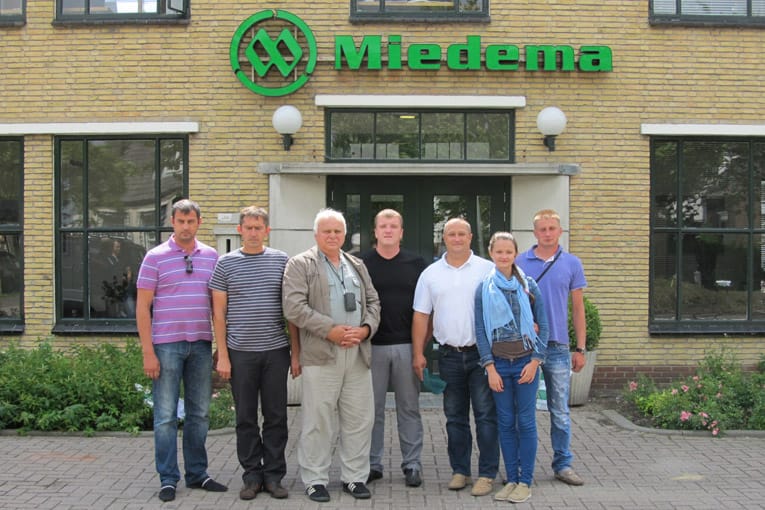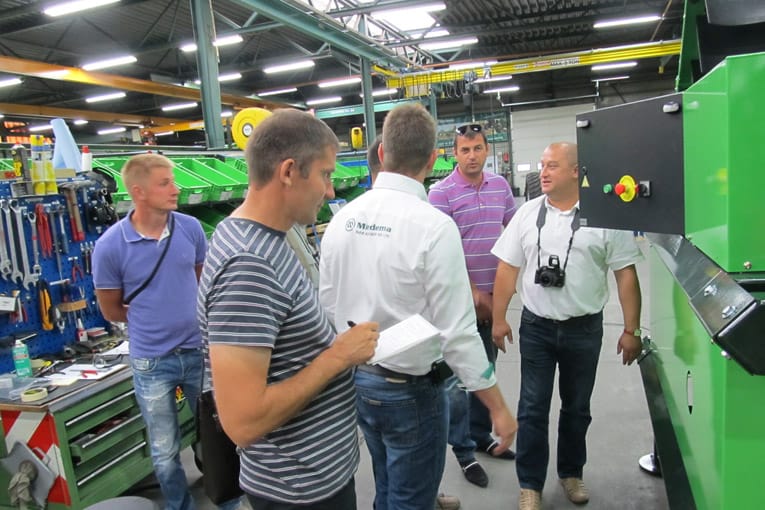In the land of tulips and potatoes
Since olden times, The Netherlands has been considered the model setter in potato production. For centuries, the Dutch have been selecting potato varieties and developing methods of growing the plant. More than 160,000 hectares of farmland in the country are devoted to this crop. Its average yield is 40 t/ha. AgroCentre and the Kolnag Company provided an opportunity for Russian farmers to learn the secrets of potato production as it is pursued by foreign farmers. For this purpose, they arranged a trip for them to Holland’s leading agricultural enterprises and to the Miedema plant, which specialises in the manufacture of potato production equipment.

For Russian farmers, such trips are like a breath of fresh air. These days, in order to make products competitive, it is imperative to master the world's advanced expertise of crop production. The Russian guests arrived in The Netherlands on a remarkable day when the country had increased its territory by a further 50 sq km by commissioning yet another dyke. Inspired by this historic event, the farmers headed for the Miedema plant to enrich their professional knowledge. Since 1945, the company has set the model in the manufacture of potato production equipment. The range goes from potato planters, bund formers and haulm crushers to tilling and sorting machines and storage equipment. The guests noted the excellent manufacturing efficiency of the work process, which employs modern metal cutting machines like robots and automatic assembly lines. The farmers were briefed on the special features of two types of potato planters: Miedema (elevating type with plant-out scoops) and Structural (band/cable type). Miedema is a super-high precision planter operating both with sprouting seeds and cut tubers.
“Due to the unique cable system, the Structural potato planter is used for careful planting of potatoes in any fraction”, says Vladislav Zhukov, sales manager of the Orel branch of AgroCentreLiski. “This is the world's fastest planter, working at a speed of up to 9 km/h”.
Starting next year, Miedema will increase the manufacture of six- and eight-row potato planters expressly for Russia. The guests could not take their eyes off the new sorting machine, the Miedema Smart Grader. For three years, the company specialists have worked on the creation of this "smart thing". The electronically controlled grader inspects potatoes in all aspects. The inspection process is recorded using an on-line modem.
Innovative software analyses the data obtained very quickly and sorts the tubers based on their size, shape, and quality. It even "filters" them according to variety. The machine output is 15 t/h. It is very popular on the Dutch farms where the Russian guests headed for a familiarisation tour.

The foreign colleagues spoke about the specifics of the potato production. The Dutch make a point of avoiding time gaps between tillage and planting. They plant potatoes on the very first "ripening" day of the soil, which sometimes is determined in an old traditional way by taking a handful of earth, squeezing it in one’s fist and dropping it under feet from waist height. If the lump crumbles on impact, the soil is considered "ripe" for planting. Early planting promotes fast tuber growth. The potatoes are planted with a between-row space of 75 cm. A hoe is used for tillage. The special feature of the Dutch technology is to keep mechanical treatment to a minimum. No subsequent between-rows tillage is employed after the bund formation. Before harvesting, the haulm is removed from the field. The tubers are left in the soil for a further 10 to 12 days depending on the variety and prospective use of the product, which helps it to ripen better and keep longer. Unlike in Russia, where field irrigation is a difficult issue, The Netherlands extensively use the drainage systems to adjust the soil moisture balance.
“The trip ‘opened our eyes’ on how to address many problems”, says Boris Voronichev, director general of the Orel Potato Field LLC (Orlovsky district, Orel oblast). “Much of what we have seen we shall use on our farms. For instance, we shall make corrections in the spraying system. We also shall employ the ‘stop-shock’ technique, which makes it possible to avoid damaging the tubers. And we shall switch over to the containerised seed storage system.”